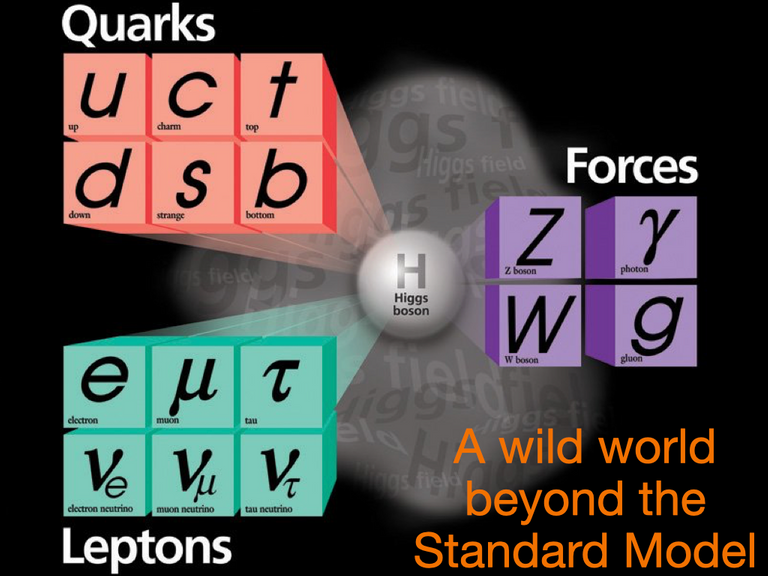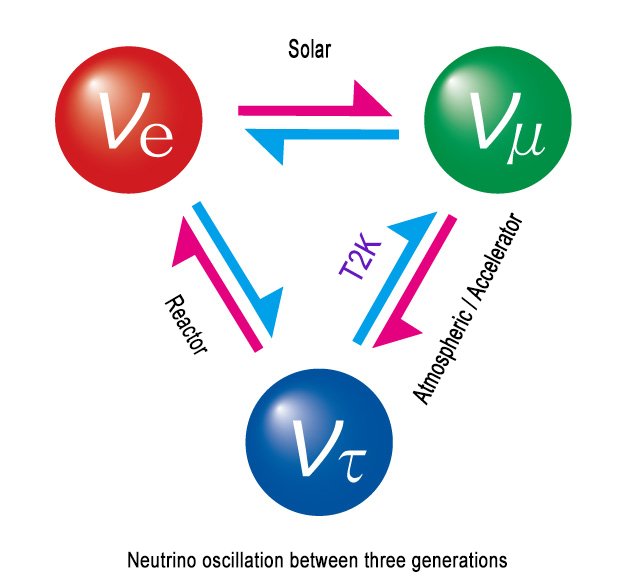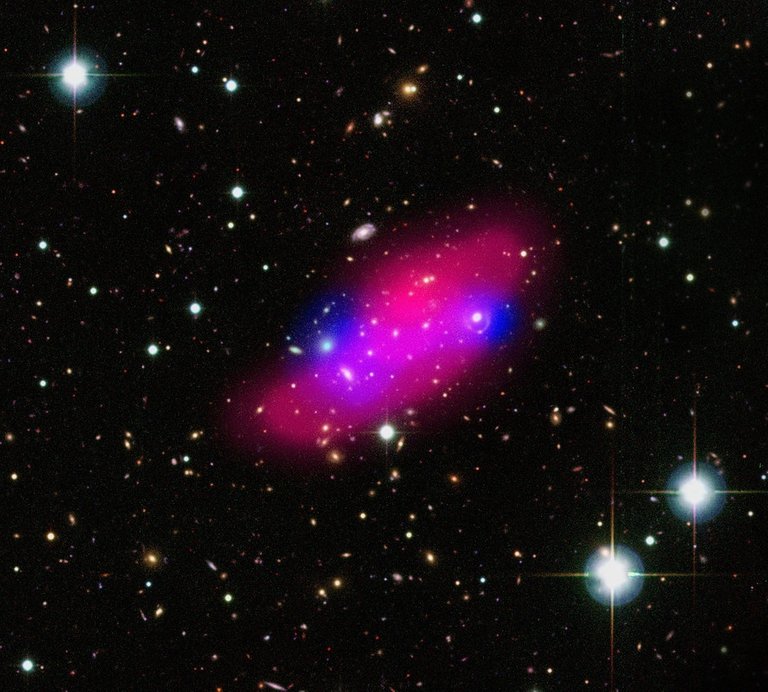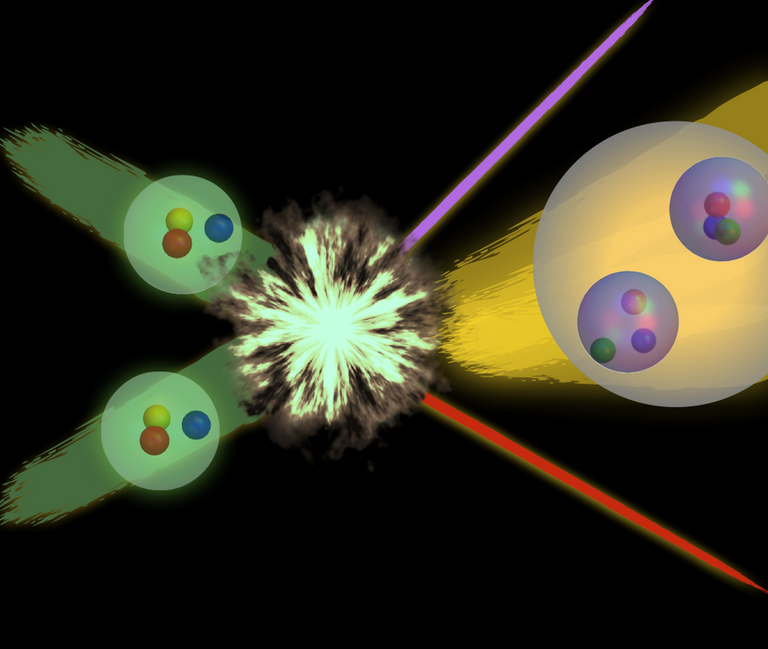Hi everyone, and welcome to my last blog for this year. I am about to drive to Brussels (Belgium) for a couple of days, before calmly coming back to France for the end of the holidays. In the meantime, here is a fresh blog about why the high-energy physics community is working for decades on new phenomena beyond the Standard Model of particle physics.
In the post of two weeks ago, I discussed how the Standard Model has been constructed brick by brick, or in other words how it has been built elementary particle by elementary particle. The post of last week was then dedicated to the Higgs boson, from the reasons why it has been added to the theory to its discovery a few years ago and the searches that will continue for possibly 100 years.
High-energy physicists hence rely on a very successful framework (i.e. the Standard Model), that provides not only an explanation for all high-energy physics data recorded so far but also predictions for all current and future experiments. However, physicists are generally rather excited by what is generally coined ‘beyond the Standard Model physics’, or new physics for short. This ‘new physics’ includes possible new phenomena predicted by theories extending the Standard Model of particle physics. These are in addition targeted quite deeply experimentally (in particular at the Large Hadron Collider at CERN).
Of course, the Standard Model works like a charm, as mentioned quite a few times in my last two blogs. For this reason, we are concerned with extensions of the Standard Model that are usually built on top of the Standard Model. In other words, we can see the Standard Model as the tip of an iceberg that we try to probe fully.
In the present post, I will try to answer why we are quite convinced that there must be some new physics somewhere, hopefully not too far behind the corner. In fact, this post will summarise the main motivations of a large part of my research work of the last 20 years.
It is however impossible to detail all the limitations and conceptual issues we may have with the Standard Model. For that reason, I subjectively decided to focus on what I personally consider as the main reasons why the Standard Model is only a milestone of the journey leading to a better understanding of how the universe works. I will then briefly mention a few other items in the last part of this blog (and will be happy to come back to this in the comment section).

[Credits: Fermilab]
Neutrino masses
In the post of two weeks ago, I detailed how we came up with a Standard Model that contains three species of neutrinos (the electron neutrino 𝞶e, muon neutrino 𝞶𝝁 and tau neutrino 𝞶𝜏). All these three neutrinos have been experimentally confirmed today, although in the case of the tau neutrino the task was not so easy.
The neutrinos are indeed the most elusive of all known particles. This originates from their very weakly-interacting nature. They are so weakly interacting that 1,000,000,000,000 neutrinos just go through any human being of the planet without doing anything… every second!
However, even if they rarely interact with anything, neutrinos have been observed in a variety of processes, and some of their properties have been determined quite well. From these properties, neutrinos are expected to be massless particles. There is nothing wrong with this, with the exception that neutrinos have been found to oscillate into each other when they propagate, as illustrated in the figure below. This observation was by the way rewarded with the Nobel Prize in physics in 2015.
This means that if we have a beam with neutrinos of a single species and if we send that beam somewhere located hundreds or thousands kilometres away (such a distance is needed by the weakly-interacting nature of neutrinos), we will end up with a beam containing neutrinos of all three types.

[Credits: J-Parc]
For instance, let’s assume we have a beam of electron neutrinos that is produced in a place A, and that we send this beam a thousand miles away to another location B. If we investigate the content of the beam in B, we will find that it still dominantly comprises electron neutrinos. However, muon neutrinos and tau neutrinos will also be present in the beam.
But are neutrinos oscillations a real problem for the Standard Model? The answer is ‘yes, yes, yes! Neutrino oscillations are only possible if neutrinos are massive. Neutrino masses are therefore a fact (as neutrino oscillations have been observed), and this fact contradicts the Standard Model.
Neutrinos hence consist in the best motivation for extending the Standard Model. We could argue that we could just use the Higgs boson as for the masses of any other particle. However, from the known properties of neutrinos, we cannot simply rely on the Higgs boson to equip them with a mass.
A generalisation of the Standard Model is needed to make neutrinos massive. The most famous mechanism that yields neutrino masses is the so-called seesaw mechanism. I won’t enter into details about this (this is probably worth a full post), but the important point is that this requires new particles beyond the Standard Model.
Neutrino physics consists thus in a significant part of the search program at the Large Hadron Collider, as there is a potential for observing new particles or their effects in present or future data. On my side, I only started to get excited and work on this subject about two years ago, so that I have only a couple of publications on it. I expect to blog about them in 2022 ;)
Dark matter
Another very good motivation to study extensions of the Standard Model is dark matter. Before detailing why, let’s focus 5 minutes on standard cosmology. The latter states that not all matter in the universe is expected to be in a visible form (in the sense that it can emit, absorb or reflect light).
It in fact turns out that 85% of matter is of a dark nature. Why do we think that there is such a thing of dark matter? There are actually several indirect hints pointing to this (I will come to the indirectness of the proofs below).
The origins of dark matter as we know it comes from the work of Zwicky in the 1930s, when he postulated dark matter to explain the observed motion of stars in a distant galaxy. 90 years ago, Zwicky measured the speed of stars as a function of their distance to the galactic centre. By means of standard classical mechanics, the same speed of stars could also be calculated from two ingredients: the way gravity works (which is very well known) and the amount of (gravitationally-interacting) visible matter.
The results obtained through observations and through calculations were however exhibiting a strong mismatch. Zwicky then proposed that some invisible massive stuff should be around. With more massive objects, classical calculations would yield a different result, and agreement between theory and data could be restored.
This idea was confirmed 30-40 years later through the work of Vera Rubin on various galaxies. She provided not only the first (quantitative) indirect evidence for dark matter, but also confirmed that dark matter was dominant over visible matter.

[Credits: ESA (CC BY-SA IGO 3.0)]
The dark matter story does not end there. We indeed have many additional pieces of evidence, so that most physicists are convinced that dark matter is real.
For instance, dark matter is a necessary component of the universe to explain cosmic microwave background data as observed by the Planck collaboration. To discuss this a bit, we can start with a brief definition of the cosmic microwave background. The latter consists of the fossil radiation left from the Big Bang.
The cosmic microwave background is known to have an average temperature of 2.72 degrees Kelvin (that is -270.42 degrees Celsius). However, the radiation temperature is not constant all over the universe. An average is an average after all. The temperature spectrum hence exhibits patterns with small variations. What is really cool is that the analysis of the structure of the variations strongly supports standard cosmology, that includes and dark matter.
As a last example for motivations for dark matter (among others which I won’t discuss to avoid this post to explode in length), we can also mention that dark matter is a necessary ingredient to explain the formation of galaxies. Without dark matter, simulations of the life of our universe cannot manage to obtain a universe as we see it today, with its stars, galaxies and clusters of galaxies. More gravitationally-interacting matter is always needed…
However, all the above proofs for dark matter are indirect, and we are still missing any direct observation of dark matter. The latter is expected to be obtained either through experiments monitoring the interaction of dark matter when it hits the planet (like at the Xenon1t experiment in Italy), or at colliders (such as the Large Hadron Collider at CERN).
This being said, we can go back to the Standard Model and the fact that it should include some elusive dark matter particle. The problem is that no elementary particle of the Standard Model can play this role. Incorporating a dark matter candidate in the theory hence automatically leads to a physics framework beyond the Standard Model, generally with a nice set of expected new phenomena.
Personally, the problematics of dark matter is crucial for my research. For this reason, I used to write quite a lot of blogs about this topic back in the days. This won’t be very different, but from next year!
The hierarchy problem
Now, let’s move away from the two problems of the Standard Model relative to data that I have discussed so far. Instead, let’s approach more conceptual limitations. The one I want to focus on is the so-called hierarchy problem.
It is called that way because there is an important hierarchy between two quantities, that are the two energy regimes relevant for the Standard Model. For the rest of the discussion, I recall that in high-energy physics, masses and energies are all measured in GeV, where 1 GeV is taken equal to the proton mass (or the mass of a hydrogen nucleus).
The first energy regime relevant for the Standard Model is connected to the masses of the W and Z bosons. These two masses are roughly the same: 100 GeV. This is what is defined as the electroweak scale.
As I have never introduced what the ‘electroweak theory’ was, let me simply state that this is the theoretical framework in which electromagnetism and weak interactions are unified. It is fully included in the Standard Model, and it is also good to mention that the electroweak regime is the regime currently probed at the Large Hadron Collider at CERN.
The second relevant energy regime is associated with the Planck scale, that is equal to 1019 GeV (or 10,000,000,000,000,000,000 GeV). At such a scale gravitational effects are important and must be accounted for. Gravity is however not included in the Standard Model, not only because at more reasonable energy scales associated effects are negligibly small, but also because we do not know how to do so.
The theory must thus be modified at the Planck scale so that gravity could be embedded. A community of people is working on this issue, that consists of a field of research on its own. Discussing this is however not the purpose of this blog.

[Credits: OLCF (CC BY 2.0)]
What we can say so far is that the electroweak scale is a scale of 100 GeV, and the Planck scale is a scale that is 100,000,000,000,000,000 times higher. We thus have a huge difference between the two scales. This difference, or hierarchy, leads to problems that could even sometimes be seen as a paradox. The reason is that the Standard Model is a quantum framework.
The quantum nature of the Standard Model has strong implications for the calculation of predictions for any measurable quantity. Those predictions must indeed include a large set of quantum correction effects. We could calculate these corrections, for instance, for the ‘size of the Higgs field’. I won’t enter into details, but for the purpose of this blog we can just keep in mind that the size of the Higgs field is what dictates the order of magnitude of the masses of the W and Z bosons.
The size of the Higgs field therefore lies around 100 GeV, or at the electroweak scale. When we consider quantum correction effects, the size of the Higgs field is however sent to 10,000,000,000,000,000,000 GeV (i.e. the Planck scale). This is a catastrophe, that can be avoided in two ways.
On the one hand, we could fix the two dozens of parameters of the Standard Model up to their 30th figure, so that quantum corrections would involve some miraculous cancellations and be all fine. This is however very unsatisfactory. Changing the 30th digit of any parameter would indeed send back the size of the Higgs field to the Planck scale… It is hard to believe that nature would be so nasty with us, forcing us to determine experimentally each parameter up to 30 figures (which we won’t be able to do anyways)!
On the other hand, we can consider the hierarchy problem as emerging from the fact that the Standard Model does not include all the elementary building blocks of nature: new particles must still be discovered. The impact of those particles on the quantum corrections will provide the desired cancellation. The cancellation could arise, for instance, by postulating some symmetry between the already-discovered and not-yet-discovered particles.
The second option is of course the preferred one in the high-energy physics community: the hierarchy problem results from the fact that only a subset of the full theory has been discovered so far.
Most frameworks extending the Standard Model and addressing the hierarchy problem hence generally include new particles to be discovered. In addition, the size of the Higgs field explains why those new particles are expected to lie not too far away from the electroweak scale. Since this is the energy regime probed at the Large Hadron Collider, we expect new phenomena to be observed in data soon. Data however still hides them from us at the present time (up to some intriguing anomalies).
The failures of the Standard Model as motivations to go beyond
I have so far focused on three reasons motivating theoretical and experimental studies of extensions of the Standard Model. I considered the problematics of dark matter, the fact that neutrinos are massive and the issue of the hierarchy between the electroweak and the Planck scales. Those three reasons are those that I consider as the most important ones to justify going beyond the Standard Model. There are however much more than three reasons in total.
- Unification: In the Standard Model only two out of the three fundamental interactions are unified (electromagnetism and weak interactions). We need to generalise the theory to be able to unify also the strong force.
- Gravity: There is a fourth fundamental interaction, gravity, that it is not included in the Standard Model. As mentioned above in this blog, embedding gravity consistently is a whole field of research.
- Three families: There are three neutrinos, three charged leptons and two sets of three quarks (a given set of three quarks having identical properties). Why three?
- What is the true nature of dark energy, the latter being needed to explain the accelerated expansion of the universe.
- Where is antimatter gone? Only matter is present today.
- Why do we live in a four-dimensional spacetime? Could there be extra dimensions?
And this list is far from being over. We can really find tens of motivations to study beyond the Standard Model physics. Physicists are hence strongly confident that the Standard Model is not the end of the story. Accordingly, beyond the Standard Model physics is a very active field of research, dozens of new scientific articles appearing every single working day of the week (this is a fact!).
In this blog, I have tried to introduce these different reasons that also justify my own research work. I am a theorist whose research consists of trying to understand what new physics beyond the Standard Model could be or could not be in the light of data. I also investigate (and sometimes design) new ways to look for new phenomena. Hopefully, this will contribute (through little steps of course) to the work of the high-energy physics community to improve our understanding of the universe.
We should also note that there are always new things that can be learned in this process of improving our vision of the world, which I find quite amazing. As a researcher, we are somehow eternal learners!
It is now time to end this blog, which is probably a bit too long as usual. Feel free to ask anything in the comment section (clarifications, questions, suggestions, etc.), and to also propose topics for the next blogs if you want to.
As last words, I wish everyone on STEMsocial and on Hive happy holidays. See you all in 2022, at least for new blogs on particle physics and cosmology!